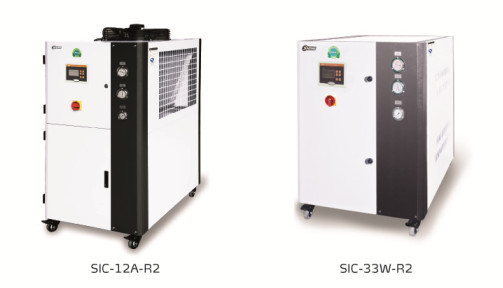Special Reports
The Significance of COP to Cooling System
COP (Coefficient of Performance) refers to the cooling capacity obtained by power consumption per unit, being an important index of technology and economy in the cooling system. High COP indicates high efficiency of energy utilization in the cooling system. COP is also a coefficient related to refrigerant types and working conditions, and theoretically speaking, it can reach 2.5~6. Due to the fact that it uses the same ratio unit of both input and output while the cooling system is not exclusive, the COP may not be the same. Consequently, it is also known as immeasurable coefficient.

As for a water chiller, one way to evaluate its performance is COP, which in fact is the ratio of cooling capacity and input power in the cooling system. COP can well reflect the overall performance of water chillers, and higher COP means higher efficiency of the cooling system. In an integral cooling system, four components of cooling are all tied closely with COP. Furthermore, both reducing input power and increasing cooling capacity help improve COP.
Water chiller needs to work continuously, so its energy efficiency plays a significant role in industrial energy conservation and emission reduction. And as the “heart” of water chiller, compressor is undoubtedly crucial for that energy-conservation efficiency, directly deciding the energy consumption of the cooling system.
When it comes to methods of improving the efficiency of compressor, there are several points.
First, it is necessary to increase the efficiency of motor, for it affects the overall efficiency of the compressor;
Second, reducing the power consumption of friction is feasible, because it helps improve the efficiency of machine;
Third, improving the valve matters, because everything related to valve affects the compressor, such as movement principle of valve, balance of spring force and airflow thrust, structure parameter, flow resistance, control of the clearance volume caused by the valve and so on;
Fourth, reduce fluctuating pressure as well as pressure of air suction and exhaustion;
Fifth, increase temperature index;
Sixth, increase capacity index;
seventh, reduce leaking. As the energy conservation standard of cooling rises, demands for compressors that do well in energy conservation will greatly expand. However, different compressors perform in different levels. Customers should give compressors with high conservation efficiency top priority, for it has direct impact on COP.
Improving heat exchanger is an effective method to increase energy conservation efficiency of air conditioners, because heat exchanger is undoubtedly the key to increase cooling capacity of a cooling system. In addition, both area and efficiency of heat exchange can directly affect the cooling capacity. There is a formula presenting the basic way of heat exchange: capacity of exchanged heat Q=KFθm. In this formula, K denotes heat-transfer coefficient; F refers to heat exchange area and θm is the temperature difference of heat-transfer. The expansion of heat exchange area means increasing heat exchange capacity, without increasing input power. As a result, not only the energy conservation efficiency but also the integral efficiency of the cooling system gets improved.
Special Reports
- The Usage of Heatless Air Dryer
- Central Material Conveying System
- Vertical Rotary Discharge Valve LRV40
If you want to read other articles, back to2017 Quarter 4 Issue 33.
